How to Embed an Rss Feed in a Web Page
Looking for a way to generate embed code for RSS feeds without much coding? Don't worry, we have got a great tool that can create an RSS feed embed for your website within 10 minutes. Read on…
The words "internet" and "content" go hand in hand. The internet is overflowing with outstanding content- be it YouTube videos, podcasts, blog posts, news articles, GIFs, and much more. In fact, data suggests that around 2.5 quintillion bytes of data are created every single day!
All of this awesome content is beneficial to not only the common public but to brands and businesses as well. In fact,
- Small Business generates 126% more leads by creating content through blogs!
- 93% of B2B marketers use content marketing.
- The growth of the website is 7.8 times higher for content marketers.
- 60% of marketers create at least one piece of content each day.
- Content marketing costs 62% less than traditional marketing and generates about 3 times as many leads.
- 69% of marketers say content is superior to direct mail and PR.
- 78% of CMOs believe custom content is the future of marketing.
- 72% of marketers are producing significantly more content than they did a year ago.
You get the point right?
Producing original content regularly on your website or blog can be a gamechanger for your marketing strategy and can significantly impact your bottom line.
However, all's not well in the content land…
Challenges with Creating Original Content Daily
Creating quality content regularly and keep your readers engaged is not easy, to say the least.
Consistency is key when publishing content online. When people subscribe to your blog, they want to get new updates every time they open it.
This means that you have to keep updating your blog to keep your readers happy. However, creating good content requires a ton of time, effort, and energy.

According to data, the two most common challenges (as reported by most marketers) are a lack of time to create enough content, and the ability to produce enough content in variety and volume.
This means that if you are a solo blogger, entrepreneur, or have a small team of people, pushing out quality content is going to be exhausting.
However, no matter how tough all of this sounds, you have to do it to survive on the internet. Especially when you are grappling with a billion other websites! That's right, there are over 1.94 billion websites on the internet currently!

If you don't publish regular, fresh content on your blog, people are going to find the blogs that do.
Read more: RSS Feed Url: Definition & Ways to Find it?
RSS Feeds to the Rescue!
We know it's hard coming up with valuable and interesting content on a daily basis. However, if you are managing a website just for the sake of having one, it's not helping your brand nor your readers in any way. So what's the solution?
One of the best ways to keep your website thriving with fresh content is by embedding an RSS feed on your website.
Adding curated RSS feed to your blog or website as embedded content is a smart way to share quality content in the least possible time. The best part? You don't have to spend time creating brand new content from scratch.
Just pick out the best relevant websites in your niche, subscribe to their RSS, and embed their feed onto your website and voila! You have brand-new content on your website.
Having a constant stream of relevant and compelling curated content on your website will keep your readers engaged and keep your mind at ease.
Read more: Best WordPress RSS Feed Plugins for Your Website
Follow these Steps to Embed Custom RSS Feed Content on Your Website
Adding RSS feed to your website is tough. Adding custom RSS feed content to your website is tougher. This is why we would like to introduce you to an awesome curation tool called elink.
elink is, by far, the best way to curate and embed content to your website or blog. This amazing RSS reader allows you to compile RSS feeds of the publications you love the most. Users can choose from an unlimited number of RSS feeds and make sure they never miss out on new stuff from their favorite blogs and websites.
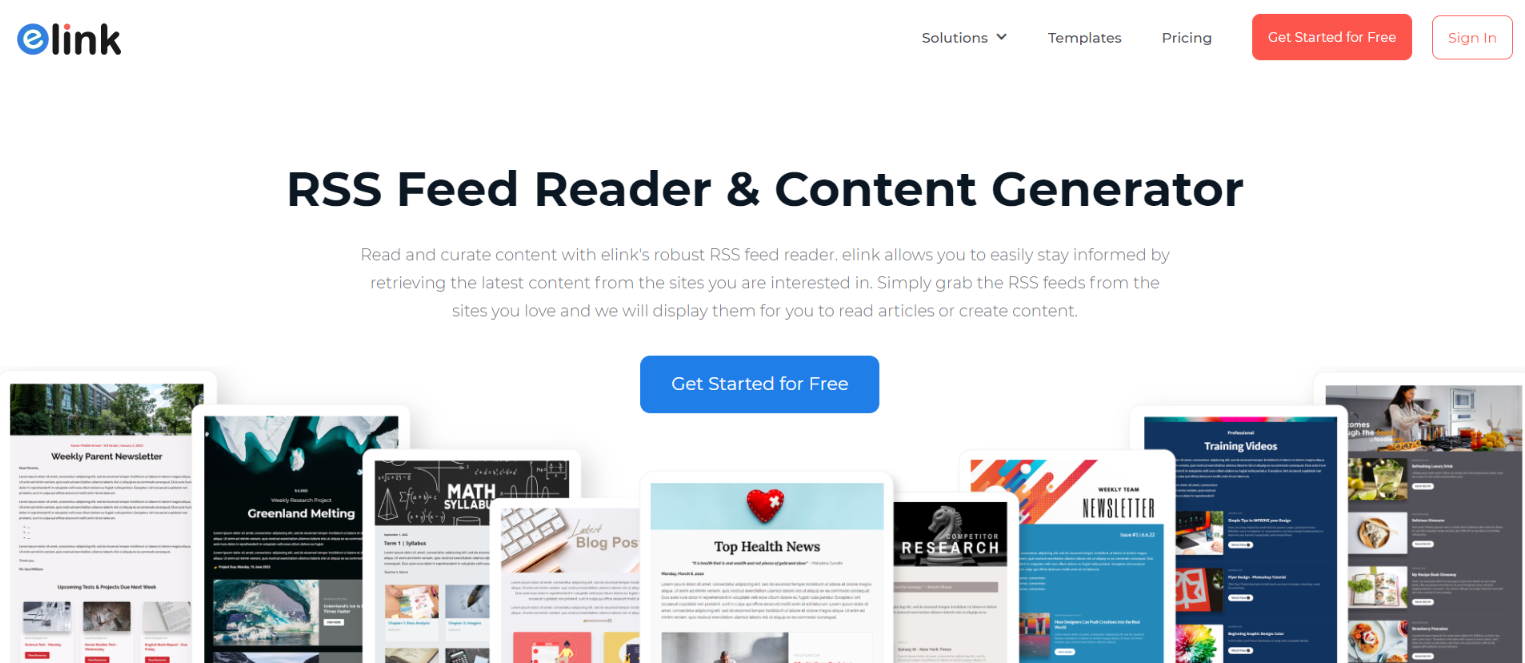
Quickly filter and search for articles based on keywords and sources, and discover & curate content. Once your feed is populated, you can click any headline to read more about the article. Click further to read the entire article on the publication's website. elink has an easy to read and a distraction-free interface that's easy on the eyes.
Apart from being an awesome RSS reader, elink is also amongst the best content curation tools out there. You can use elink to bundle articles directly from your RSS Feed Reader and create professional email newsletters, single web pages, and web content to share with your social media followers, blog readers, clients, and even internal teams.
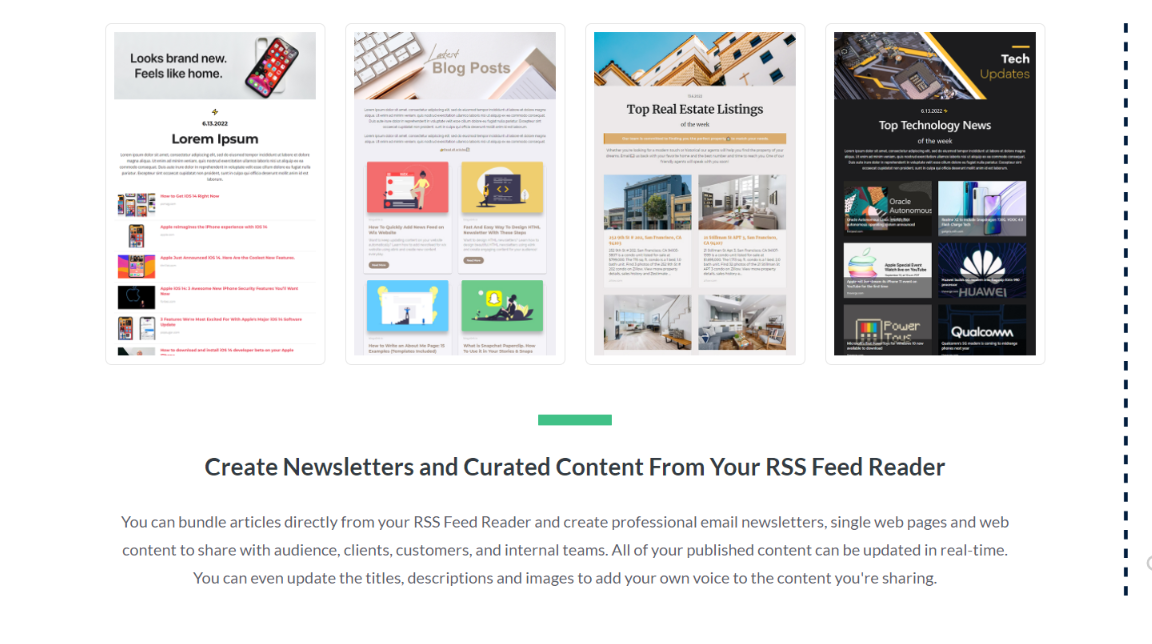
Update the titles, descriptions, and images to add your own voice to the content you're sharing and can even update your content after it has been published! All-in-all, elink is not only a great RSS reader but is a dream tool for anyone who creates and distributes content online!
Follow the following steps to embed custom RSS feed content on your website in under 5 minutes:
Step 1: Create an account on elink
First things first. Go to elink.io and quickly create an account.
Step 2: Go to the RSS Feeds tab
Go to the Feeds tab located at the top of your dashboard. This is your RSS feed reader which you can customize and add as many sources of news as you want. Click on the "add feed" button on the top right of the page and search your favorite publication. Once you have found your favorite publication, click "add feed".
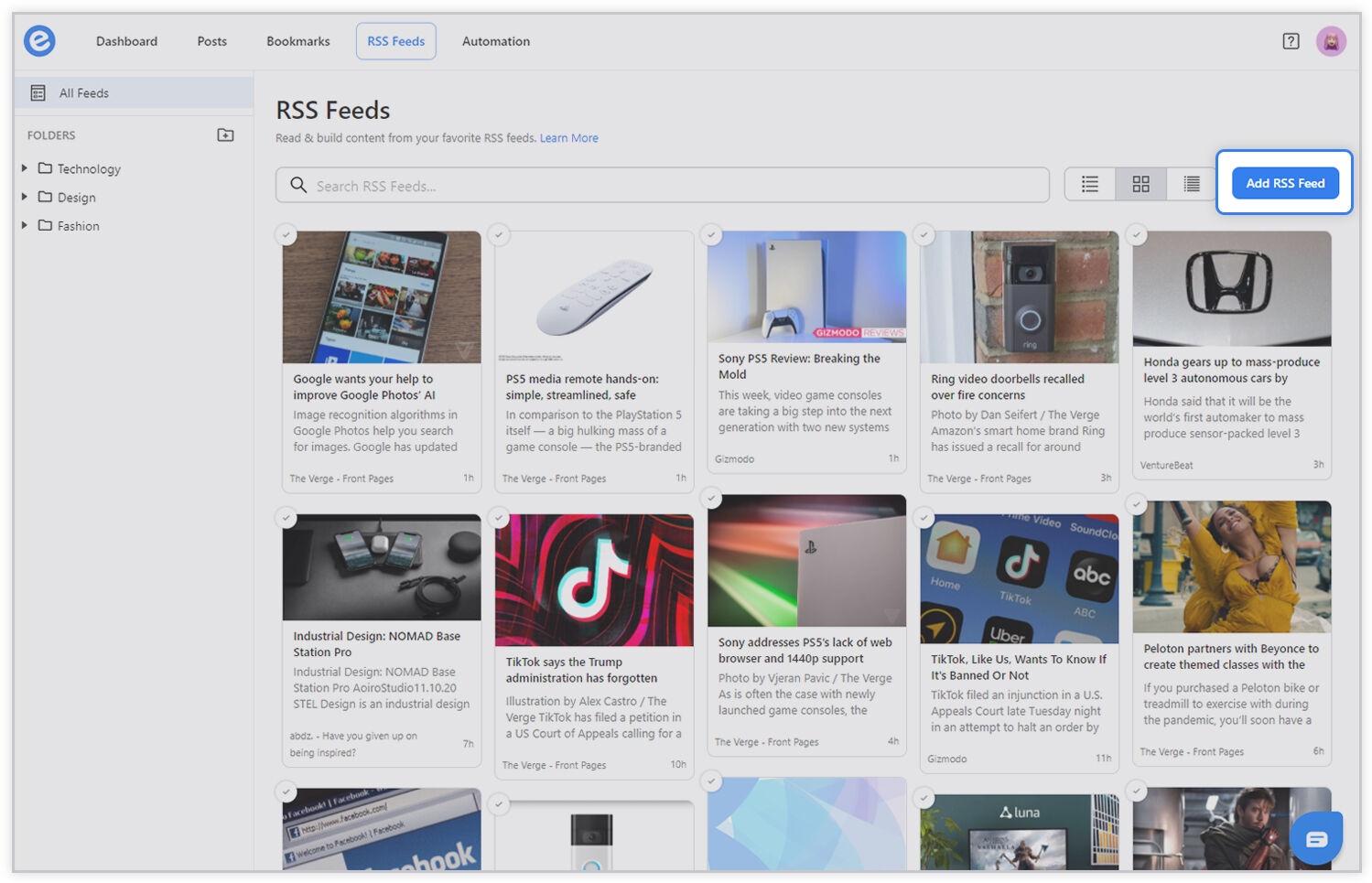
Step 3: Bundle links for RSS
elink will not automatically populate your reading list from your subscribed RSS feeds. Whenever you see an article from your RSS feed that you want to create content around and add to your website, click on the checkbox next to that article. You can add a maximum of 10 article links at a time.
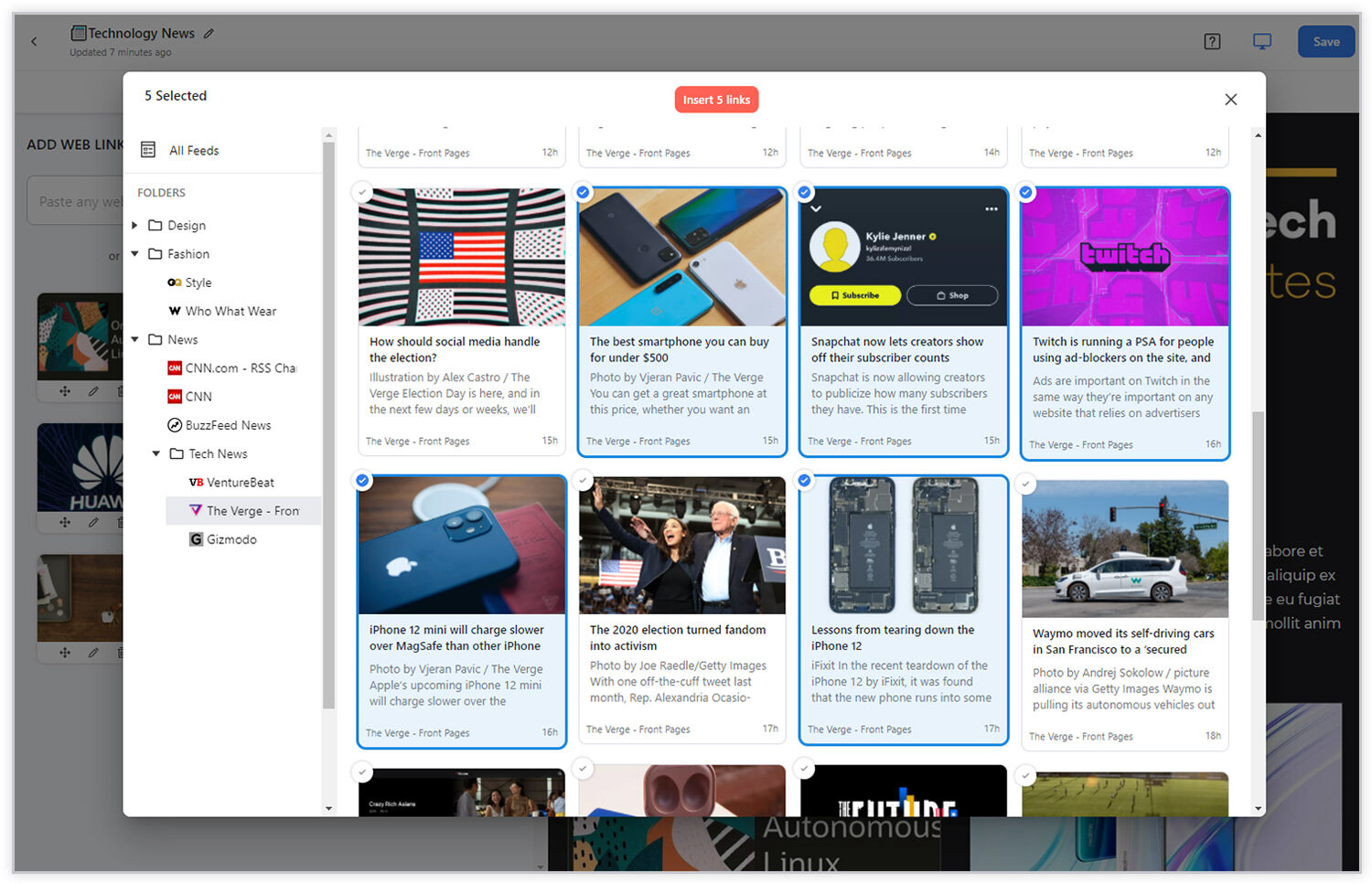
Step 4: Create Post for RSS Feed
Once you are done bundling the links, click on the "build post" button at the top of the page. You will now see all your articles displayed in an amazing tile-layout.

Step 5: Edit what you want
The best part is that you can click on the "edit pencil" icon on every article and can change the image, title, and description of any post. It's a fantastic way to add your own voice to the content you are sharing and personalize content for your readers. You can also move around the links and display them in whatever order you like.

Step 6: Add more content to your feeds
In case you want to add more content to your post, you can either copy and paste the link of an article manually or click on the "RSS Feed" button to add web links from your RSS feed reader.
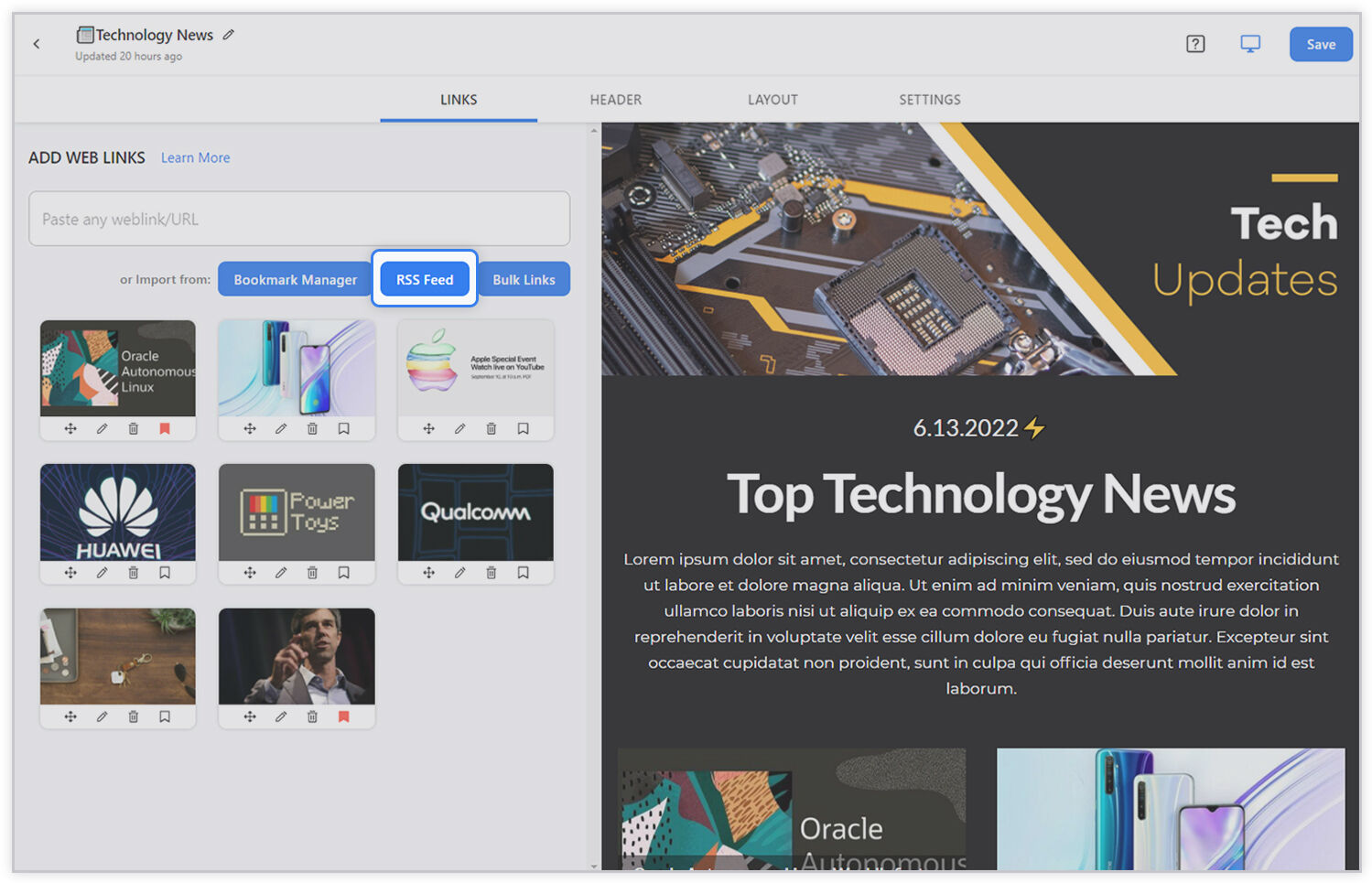
Step 7: Add a header
Head over to the "Header section" to add a header banner, introductory as well as ending (footer) text.

Step 8: Choose a layout
Go to the layouts tab to choose from over 30+ visually pleasing layouts to make your RSS embed look astonishing. The more appealing you make your content, the better it will be able to catch the reader's attention. Each template is responsive, so you don't have to worry about the appearance of your links on different devices with varying screen sizes. The best part is, you are not stuck with your layout as you can come back at any time even and give it a new look, even after it has already been published!

Step 9: Personalize!
It's time to add some pizzazz to your content by changing the theme color, text color, background color, font, button text, and more. You can also make your content SEO friendly by tinkering with the SEO settings. Once done, click publish!

Step 10: Publish and Embed your RSS Feed!
Once you are done creating your RSS feed content, its time to embed it on your website. After clicking the publish button, you will be presented with a sidebar displaying the various ways in which you can share your RSS feed content. Since we want to embed our RSS feed content on our website, scroll down to the 'Website Embed' option. You'll see two options:
1. Embed Code that you can use on any website builder and,
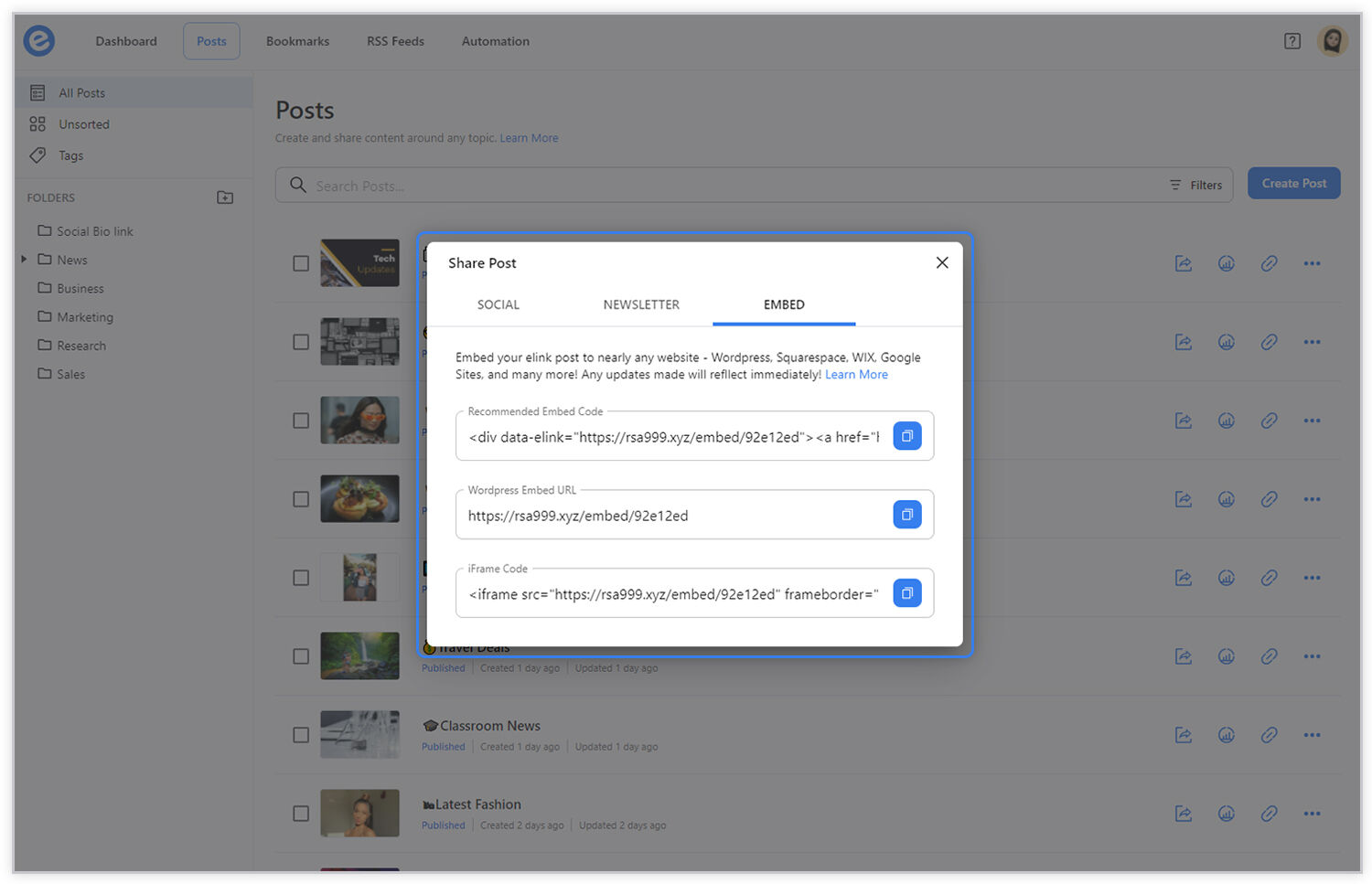
2. WordPress Embed URL
Nearly all website builders have the option of placing HTML and Javascript into your websites. Once the code has been entered, you'll see your content render inside of your website or blog perfectly.
Awesome, right?
What are you waiting for?
It doesn't have to be time-consuming to create thought-provoking and beautiful content. Sometimes, you need to think outside the box and outsmart the competition by finding newer ways of publishing and sharing cool content with your audience. elink is a great tool to embed custom RSS feeds on your website or blog and renders perfectly, making the content look professional. So, what are you waiting for? Sign up for an elink account today and start embedding custom RSS feeds onto your website in minutes!
Need any help with elink? Tweet us @elink_io and we will be more than happy to guide you in your content journey. Good luck!
Further reads:
How to Create a Custom Social Media Wall for Your Website?
Top 8 RSS Reader Apps
RSS to Email: How to Create Automated Email Newsletters Using RSS!
Read RSS Feeds in 9 Different Ways!
Top 35 World News Websites & RSS Feeds to Follow!
Top RSS Feed Widgets For Your Website!
Best RSS Feed Generators You Must Try
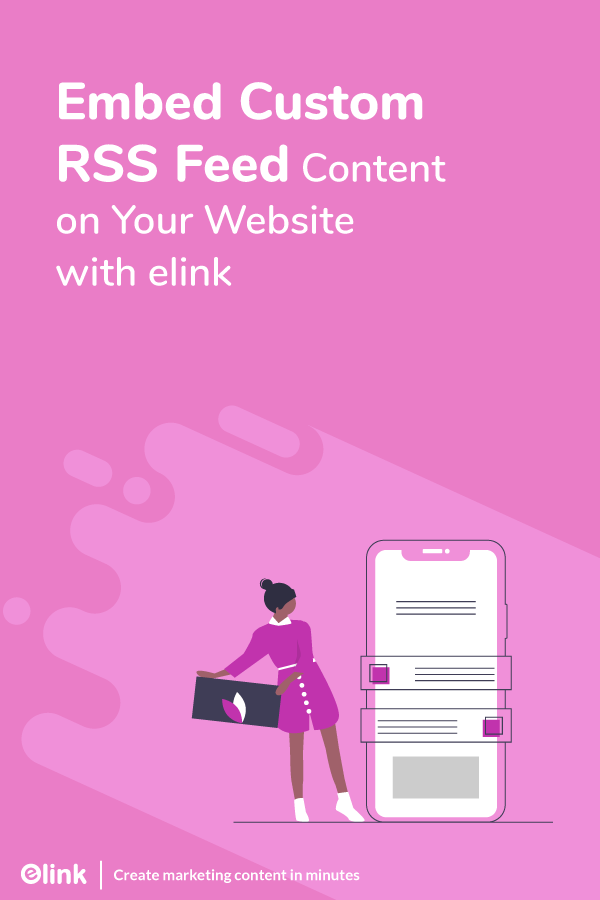
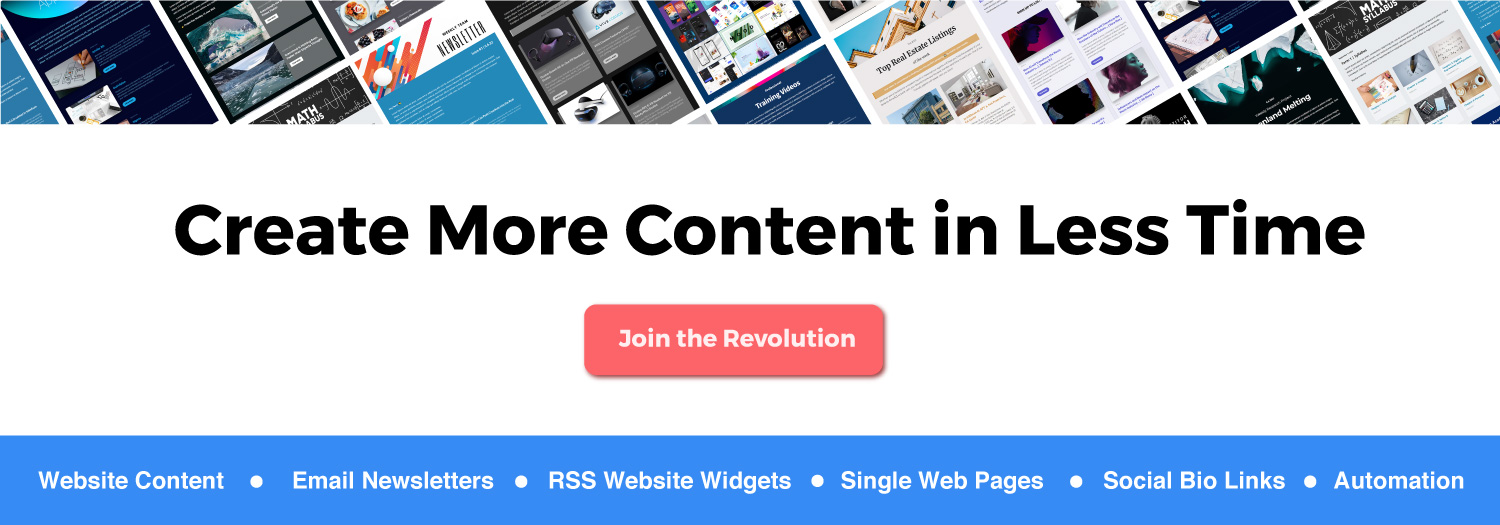
Source: https://blog.elink.io/embed-custom-rss-feed-content-on-your-website/
0 Response to "How to Embed an Rss Feed in a Web Page"
Post a Comment